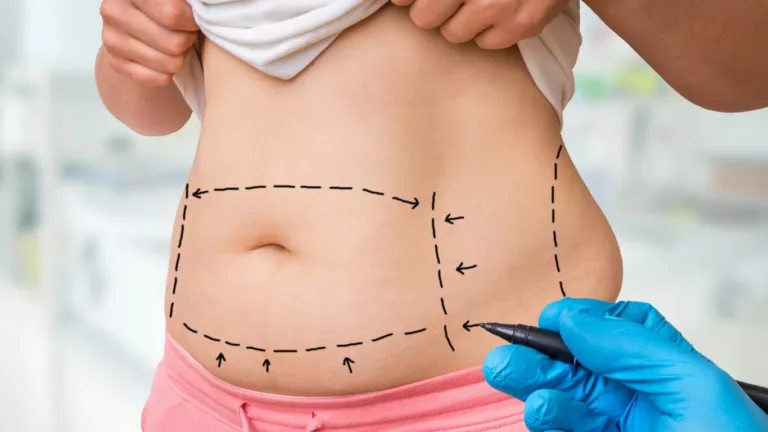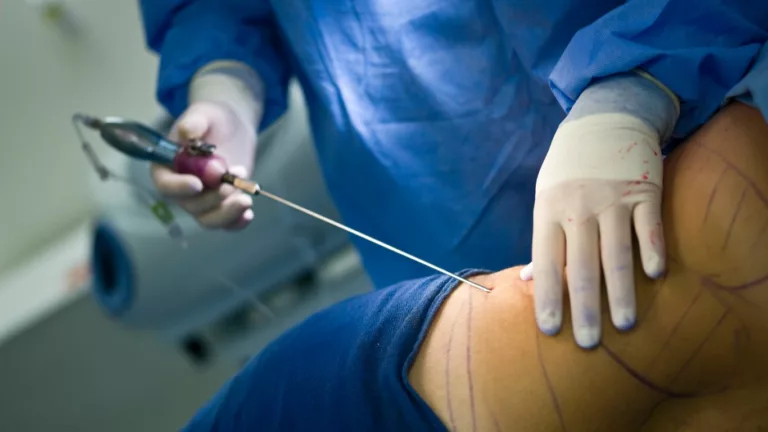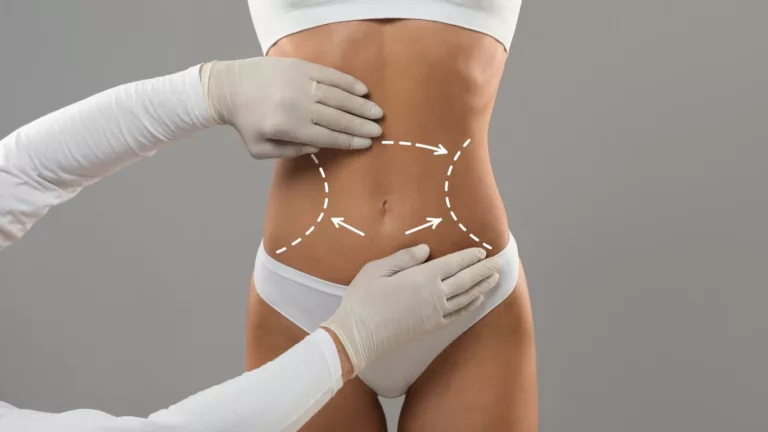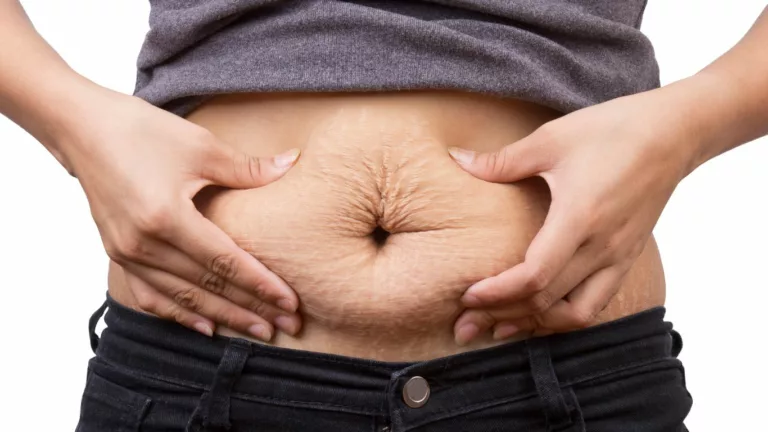What to Expect 5 Years After Liposuction
Explore the long-term effects and outcomes of liposuction 5 years post-procedure. Learn about maintenance, potential changes, and key considerations for lasting results.
Liposuction, a popular cosmetic surgery for body contouring, involves removing excess fat to achieve a desired shape. While immediate results can be satisfying, understanding the long-term effects and outcomes, such as those seen five years post-procedure, is crucial for maintaining the results and overall health. This article delves into what to expect, how to maintain the benefits, and important considerations for individuals who have undergone liposuction.

What Happens to Your Body 5 Years After Liposuction?
The long-term results of liposuction largely depend on several factors, including lifestyle, genetics, and the specific areas treated. Here’s an overview of common outcomes and changes observed five years after the procedure.
Maintained Results with Proper Lifestyle
For many, the results of liposuction can be long-lasting if coupled with a healthy lifestyle. This includes regular exercise, a balanced diet, and maintaining a stable weight. Individuals who adhere to these habits often retain their post-surgery contours and enjoy prolonged satisfaction with their appearance. Regular physical activity is crucial, as it helps to prevent weight gain and maintain muscle tone. A balanced diet rich in whole foods, such as fruits, vegetables, lean proteins, and healthy fats, ensures that the body receives essential nutrients without excess calories. Consistent hydration also plays a role in overall health and skin elasticity.
Furthermore, maintaining a stable weight is essential. Significant weight fluctuations can negatively impact the results of liposuction by causing fat to accumulate in untreated areas. This can alter the body’s overall contour and diminish the aesthetic benefits of the surgery. Individuals who successfully maintain their weight and follow a healthy lifestyle often report high levels of satisfaction with their long-term results.
Potential Fat Redistribution
While liposuction permanently removes fat cells from treated areas, it does not prevent new fat from accumulating in other areas. Some individuals might notice changes in their body shape if they gain significant weight, with fat depositing in untreated areas. This underscores the importance of weight management after the surgery. For instance, if liposuction was performed on the abdomen, new fat might accumulate in areas like the thighs, arms, or back if significant weight is gained post-surgery.
This phenomenon of fat redistribution is a critical consideration for those looking to maintain their liposuction results. It highlights the need for ongoing vigilance in terms of diet and exercise. Regular follow-ups with a healthcare provider can also help monitor and manage any changes in body composition, ensuring that the aesthetic goals of the liposuction are sustained over the long term.
Skin Elasticity and Aging
As the body ages, natural changes in skin elasticity can affect the appearance of liposuction results. Skin may become looser or sag in areas that were previously firm. This is particularly relevant for older individuals or those who had significant amounts of fat removed. Combining liposuction with skin-tightening treatments or maintaining good skin care can help mitigate these effects.
The aging process affects the skin’s ability to retract and adapt to the new contours created by liposuction. Over time, the loss of collagen and elastin, which are crucial for skin firmness and elasticity, can lead to sagging or drooping skin. To counteract these effects, individuals may consider non-invasive skin-tightening procedures such as radiofrequency treatments, laser therapy, or ultrasound treatments. Additionally, a robust skincare routine that includes moisturizing, sun protection, and possibly the use of retinoids can support skin health and appearance.
Furthermore, some individuals opt for additional cosmetic procedures to enhance and maintain their liposuction results. These might include tummy tucks, thigh lifts, or arm lifts, depending on the areas treated and the individual’s unique needs. Consulting with a board-certified plastic surgeon can provide tailored advice and options for maintaining skin elasticity and the overall aesthetic results of liposuction.

How to Maintain Liposuction Results
Maintaining the benefits of liposuction involves a commitment to healthy habits and regular care. Here are some tips to ensure long-lasting results:
Regular Exercise
Engaging in consistent physical activity helps in maintaining a stable weight and overall fitness. Incorporate a mix of cardiovascular exercises, strength training, and flexibility workouts to support your body contour and health. Cardiovascular exercises, such as running, cycling, or swimming, help burn calories and reduce overall body fat. Strength training, on the other hand, builds muscle, which can enhance the body’s shape and increase metabolic rate. Flexibility exercises, such as yoga or Pilates, improve muscle tone and overall well-being.
Regular exercise not only helps maintain liposuction results but also promotes overall health, reducing the risk of chronic diseases like diabetes, heart disease, and hypertension. It also improves mental health by reducing stress, anxiety, and depression, contributing to a better quality of life.
Balanced Diet
A diet rich in whole foods, including fruits, vegetables, lean proteins, and healthy fats, can help manage weight and provide the nutrients needed for overall well-being. Avoid excessive consumption of processed foods, sugars, and unhealthy fats. Focus on portion control and balanced meals that provide sustained energy throughout the day.
Incorporating fiber-rich foods such as whole grains, legumes, and vegetables can help with satiety and prevent overeating. Lean proteins, including chicken, fish, tofu, and legumes, support muscle maintenance and repair. Healthy fats from sources like avocados, nuts, seeds, and olive oil provide essential fatty acids that support cellular health and hormone regulation.
Hydration is also crucial. Drinking plenty of water helps maintain skin elasticity and overall health. It aids digestion, circulation, and nutrient absorption, all of which are important for maintaining liposuction results.
Hydration and Skin Care
Staying hydrated is essential for skin health and elasticity. Use moisturizers and sun protection to keep your skin in good condition, and consider treatments like massage or laser therapy to support skin firmness. Proper hydration helps maintain the skin’s plumpness and elasticity, reducing the likelihood of sagging or wrinkling.
Incorporating a daily skincare routine that includes cleansing, exfoliating, moisturizing, and applying sunscreen can protect the skin from environmental damage and support its natural repair processes. Products containing ingredients like hyaluronic acid, peptides, and antioxidants can provide additional benefits by hydrating and protecting the skin from oxidative stress.
Professional skin treatments, such as microdermabrasion, chemical peels, and laser treatments, can also enhance skin texture and firmness. Regular massages can improve circulation and support lymphatic drainage, which helps reduce swelling and improve skin appearance.

Considerations and Precautions
While the outcomes of liposuction can be rewarding, it’s important to consider potential long-term effects and precautions:
Weight Fluctuations
Significant weight changes can impact the results of liposuction. Fluctuations in weight can lead to uneven fat distribution and affect the body’s overall contour. Aim to maintain a consistent weight through a balanced lifestyle. Regular monitoring of weight and body measurements can help detect any significant changes early and allow for timely adjustments in diet and exercise.
For some individuals, working with a nutritionist or personal trainer can provide additional support and guidance in maintaining a healthy weight. Setting realistic goals and creating a sustainable plan for diet and exercise are key to long-term success.
Post-Surgical Complications
Although rare, some individuals might experience long-term complications such as irregular contours, numbness, or changes in skin sensation. Regular follow-ups with your surgeon can help address any concerns promptly. Early detection and intervention can prevent minor issues from becoming major problems.
It’s important to communicate any concerns or changes to your surgeon, even years after the procedure. They can provide guidance on possible treatments or interventions to address any issues that arise. In some cases, revision surgery might be considered to correct irregularities or improve results.
Psychological Impact
Body image and self-esteem can be positively influenced by liposuction, but it’s essential to maintain realistic expectations. Psychological well-being plays a significant role in overall satisfaction with the procedure. While liposuction can enhance physical appearance, it’s important to recognize that it is not a solution for underlying psychological or emotional issues.
Individuals considering liposuction should have a clear understanding of the procedure, its limitations, and realistic expectations of the outcomes. Counseling or therapy might be beneficial for those struggling with body image issues or unrealistic expectations. A healthy mindset and self-acceptance are crucial for long-term satisfaction with liposuction results.

Conclusion
Five years after liposuction, individuals can enjoy lasting results by adhering to healthy lifestyle habits and taking proactive measures to maintain their body contour. Understanding the potential long-term changes and addressing them through proper care can ensure that the benefits of the procedure are preserved over time. Consulting with healthcare professionals and staying informed about post-surgical care are crucial steps toward achieving and maintaining the desired outcomes of liposuction.
Appendices
References
For further exploration of the long-term effects and outcomes of liposuction, consider reviewing the following references:
- Smith, J. P., & Brown, R. L. (2020). Long-term Results of Liposuction: A Retrospective Analysis. Journal of Cosmetic Surgery, 12(3), 245-258. Read Article
- Jones, A., & Clark, M. (2018). Maintaining Liposuction Results: The Role of Lifestyle and Post-Surgical Care. Plastic Surgery Today, 15(2), 130-145. Read Article
- National Institutes of Health (NIH). (2023). Liposuction: Benefits, Risks, and Long-term Effects. National Health Report, 34(5), 210-225. Read Article
FAQs
Here are some frequently asked questions about the long-term outcomes of liposuction:
- How long do liposuction results last? Liposuction results can be long-lasting if maintained with a healthy lifestyle. However, factors like weight fluctuations and aging can affect the appearance over time.
- Can fat return after liposuction? Fat cells removed during liposuction do not return, but new fat can accumulate in untreated areas if significant weight is gained. Maintaining a stable weight is crucial for lasting results.
- What should I do if I notice changes in my liposuction results? If you notice significant changes or complications, consult with your surgeon. They can provide guidance on treatments or lifestyle adjustments to address your concerns.
Related Table
Here’s a summary table of key information regarding the long-term effects and maintenance of liposuction:
| Aspect | Information |
|---|---|
| Maintained Results | Possible with a healthy lifestyle, regular exercise, and balanced diet |
| Potential Changes | Fat redistribution, skin elasticity changes, weight fluctuations |
| Precautions | Monitor weight, regular follow-ups, realistic expectations |
Note: Individual responses to liposuction may vary, and it’s important to seek personalized advice from a healthcare provider.
Disclaimer: The information provided in this article is for educational and informational purposes only. It is not intended to be a substitute for professional medical advice, diagnosis, or treatment. Always seek the advice of your physician or other qualified health provider with any questions you may have regarding a medical condition. Never disregard professional medical advice or delay in seeking it because of something you have read in this article. Reliance on any information provided in this article is solely at your own risk.

Camellia Wulansari is a dedicated Medical Assistant at a local clinic and a passionate health writer at Healthusias.com. With years of hands-on experience in patient care and a deep interest in preventive medicine, she bridges the gap between clinical knowledge and accessible health information. Camellia specializes in writing about digestive health, chronic conditions like GERD and hypertension, respiratory issues, and autoimmune diseases, aiming to empower readers with practical, easy-to-understand insights. When she’s not assisting patients or writing, you’ll find her enjoying quiet mornings with coffee and a medical journal in hand—or jamming to her favorite metal band, Lamb of God.






